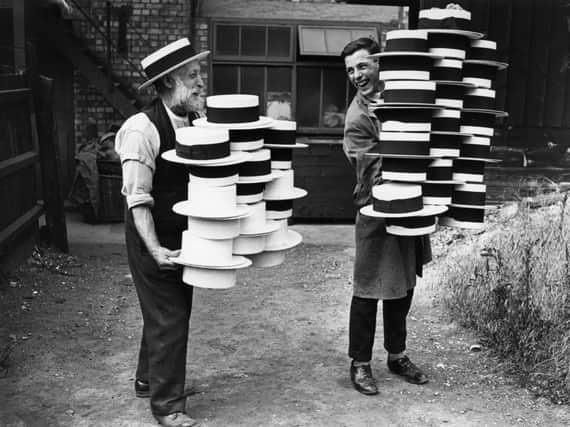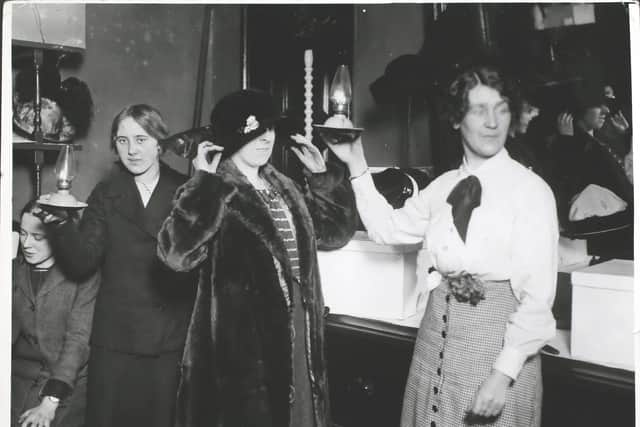Nostalgia: When you were judged by the shape of your hat


That’s where milliners came in.
Today it is a profession associated with the vanity headwear favoured by racegoers at Ascot, York or Doncaster on ladies’ day. But until the 1960s, millinery – the word comes from the Italian city of Milan, which was considered home to the best bonnets, gloves and ribbons of the Renaissance – was as much a part of day-to-day dress as a summer coat, and not just for women.
Indeed, a gentleman’s place in society could be determined by his choice of titfer – a bowler for the city businessman, a fedora or a more rakish trilby for professional types, and a flat cap or deerstalker in the country. The bowler, uniquely, had a dual identity, being often sported by tradesmen above their overalls as an alternative to a cap.


Advertisement
Hide AdAdvertisement
Hide AdThe first milliners were felt blockers who made hats from wool and rabbit hair. Just as shoemaking was a local craft in Northampton, millinery was practiced principally in and around Dunstable, moving to the relative metropolis of Luton when the railways arrived.
Other countries also had their centres of industry, and by the late Victorian age there were more than 8,000 practitioners in London and Paris alone. In New York, it was said that some 83,000 women workers were employed – often in sweatshops – in blocking, trimming and finishing the materials.
Today, it is China and the Far East that are the production powerhouses for Panamas, baseball caps and other styles that have survived the centuries. But mass-production has not entirely replaced the basic technique of wrapping crowns and brims around a wooden hat block, curated especially for each design.
Support The Yorkshire Post and become a subscriber today. Your subscription will help us to continue to bring quality news to the people of Yorkshire. In return, you’ll see fewer ads on site, get free access to our app and receive exclusive members-only offers. Click here to subscribe.
Comment Guidelines
National World encourages reader discussion on our stories. User feedback, insights and back-and-forth exchanges add a rich layer of context to reporting. Please review our Community Guidelines before commenting.